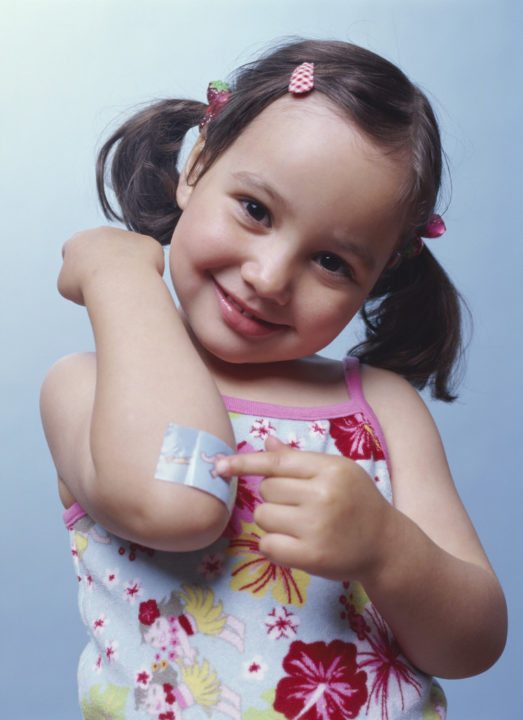Treating Wounds in Children

Much of the management of wounds in children is based upon clinical research and practical experience gained in adults, and on wound care products developed with an older population in mind. Although the basic principles of wound care are consistent across adults and children, there are some important differences that should be considered when treating wounds in children.
What Makes Treating Children Unique
One of the key differences to consider when treating wounds in children is a child’s potential difficulty in describing pain, particularly the specific type of pain, which may lead to certain conditions remaining undiagnosed. Important physiological differences also exist between the adult and pediatric population. For example, the epidermal skin is more loosely bound to the dermis in infants, making the child more susceptible to epidermal tears and blisters. A child’s skin may also be more sensitive to product ingredients, and is unlikely to have the same comorbidities as an older patient. Pressure ulcers in infants and toddlers are surprisingly common, with rates as high as 27% reported in some pediatric intensive care units, but they tend to occur predominately in the occipital region. Interestingly, healing capabilities tend to be enhanced in children, with superficial scrapes and scratches often seeming to heal more or less overnight.
Wound Care Products for Children
Most wound care products are developed in research studies conducted in adults, and the wound care practitioner usually has to adapt adult products when treating wounds in children. Care should always be taken to review the list of ingredients in all products to identify known irritants such as lanolin, balsam of Peru, alcohol, dyes, and fragrances. Furthermore, medicated topical treatments and dressings should be used with caution as little data are available concerning rates of absorption or clearance of the active components of these products in children. It is thus not always simply a matter of ‘cutting to size’ when treating wounds in children. Indeed, when an adult dressing or product is used inappropriately on a child, it has the potential to exacerbate a wound, rather than to heal it.
There is a clear need for more research studies to be conducted looking at treating wounds in a pediatric population. However, until such data become available, wound care in children should be based on the techniques and principles used in adults, but with due care and attention and adaptation of techniques as necessary.
Learn More with Our Wound Care Program Options
Interested in learning more about wound care and certification? Browse through our wound care certification courses for information on our comprehensive range of education options to suit healthcare professionals across the full spectrum of qualifications and experience.

For the past two years I have been reading your posts. Wound care was always a true love of mine, quite simply because of the dual gratification for both patient and nurse. Freeing someone from pain and helping him/her become mobile gives the greatest nursing reward. Now I am a “senior” nurse and not such a hot commodity! If I though I could study, become certified, find work to help offset the medical/living that we have, I would jump right in. So far, I haven’t been given any encouragement r/t job opportunity. The irony is that, thank G_d I take no medications myself, I walk 3 miles approximately 5x.week, and follow a macrobiotic. Interviewers, know, are have reservations regarding my age. I’m often asked if I could work an 8 hour day! Age discrimination is here to stay.
Wound certification can be a great “differentiator” in the field of nursing. The WoundEducators.com courses offer an affordable and convenient way to become wound care certified. We have had clinicians that have been in the field for over 40 years become certified. Our students are finding success in long term care, home care, wound clinics and of course the hospital setting. Keep exploring and consider WoundEducators.com when you decide to become wound care certified!